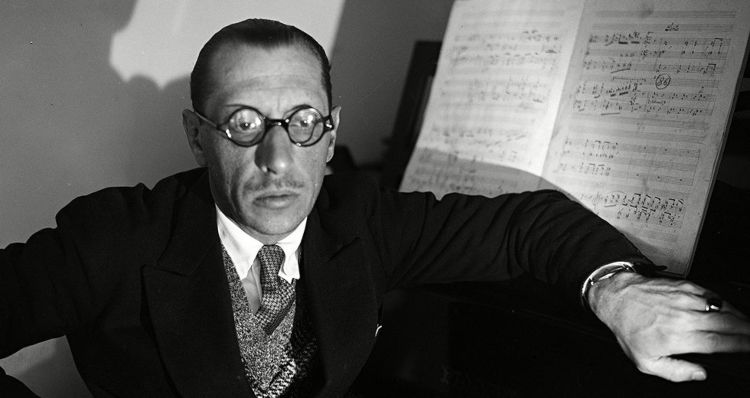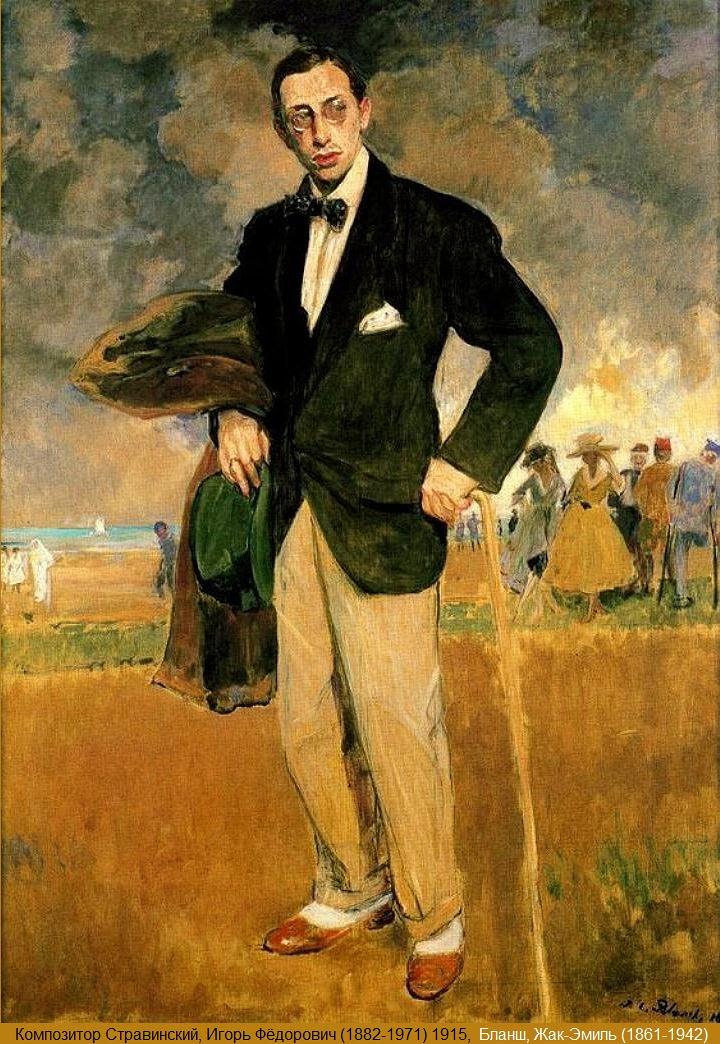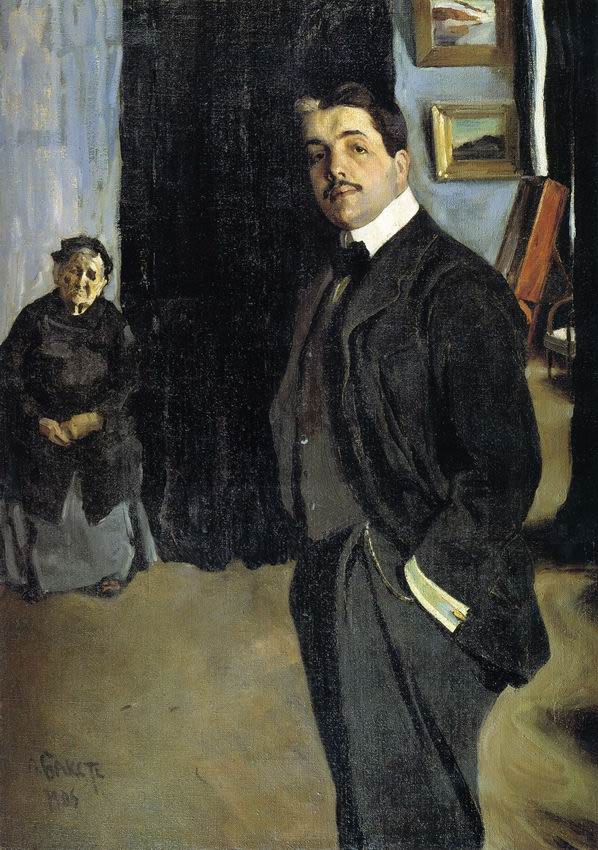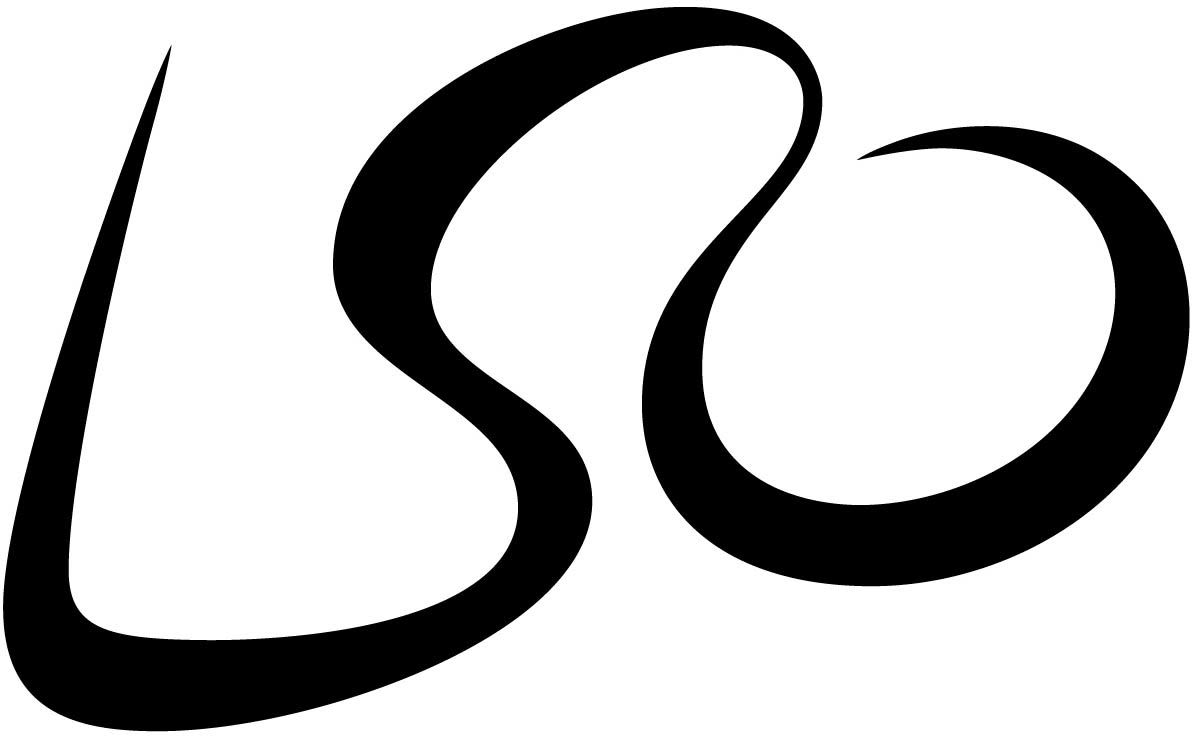Igor Stravinksy's
Petrushka
A deep dive into Stravinsky's ballets

The Firebird
Igor Stravinsky, born in 1882 in Oranienbaum, west of St Petersburg, showed early talent for music. His father insisted he should study law instead, but on the side, he was able to take composition lessons with Nikolai Rimsky-Korsakov. When the impresario Serge Diaghilev, creator of the Ballets Russes, heard his orchestral work Feux d’artifice in 1909, his future was sealed.
Diaghilev wished to commission a ballet based on a Russian folktale, The Firebird, but needed the score faster than his first choice of composer, Lyadov, could promise. Stravinsky, a keen young newcomer, won the job instead, making a tremendous impression with his colourful orchestration, his ingenious use of Russian folksong and the elemental energy of his rhythmic writing.
Watch: The 'Infernal Dance' from Stravinsky's The Firebird
Then followed: The Rite of Spring
Following the ballet’s warm reception, Stravinsky pitched to the impresario another idea that eventually developed into The Rite of Spring. Diaghilev mooted staging it in the 1912 season. Nevertheless, on visiting Stravinsky and his young family at Clarens in Switzerland, in autumn 1910, he found something completely different in progress: a work for piano and orchestra in which Stravinsky envisioned the solo instrument as a puppet – 'suddenly endowed with life', the composer later commented, 'exasperating the patience of the orchestra with diabolical cascades of arpeggios'.

Igor Stravinsky
And finally: Petrushka
For Diaghilev it was a short imaginative hop from there to the story of Petrushka, a Russian puppet show sometimes compared to Punch and Judy, which had become part of the annual Carnival festivities in St Petersburg in the 1830s. The figure of Petrushka also resembles the commedia dell’arte archetype of Pierrot (Little Peter – ‘Petrushka’ being the Russian equivalent).
Spotting its potential, Diaghilev encouraged Stravinsky to transform the piece into a ballet. The composer recalled: 'We settled the scene of the action: the fair, with its crowds, its booths, the little traditional theatre, the character of the magician with all his tricks; and the coming to life of the dolls'.
He worked on the music with increasing enthusiasm: 'My Petrushka is turning out each day completely new', he wrote in a letter, 'and there are new disagreeable traits in his character, but he delights me because he is absolutely devoid of hypocrisy'. The eponymous puppet’s recurring musical motif is a 'Petrushka chord' that combines two triads, C major and F-sharp major, played simultaneously. This dissonance gives the character an undertone of latent violence.

Serge Diaghilev

Igor Stravinsky
Igor Stravinsky

Serge Diaghilev
Serge Diaghilev
The premiere of Petrushka took place in the Théâtre du Châtelet in Paris on 13 June 1911, with choreography by Mikhail Fokine and designs by Alexandre Benois, who was inspired by his own childhood memories of frosty winter fairs in St Petersburg. The title role was danced by the great Vaslav Nijinsky, with Enrico Cecchetti as the Magician and Tamara Karsavina (the first Firebird) as the Ballerina.
The creative process was far from trouble-free; Fokine disliked the music’s quirky modernism, the rhythms of which confused the dancers. Despite that – and despite Diaghilev running out of credit on the day of the premiere – the ballet was a triumph, far from prefiguring the scandal that attended The Rite of Spring’s opening night two years later.
Watch: LSO players discuss Stravinsky's The Rite of Spring
'I love ballet and am more interested in it than in anything else.... For the only form of scenic art that sets itself, as its cornerstone, the tasks of beauty, and nothing else, is ballet.'

In 1946-47, from his adopted home in the US, where he had settled in 1939, Stravinsky made a revised version, with half an eye on securing the longevity and geographic spread of his copyright. He thinned out the instrumentation slightly, rendering it more user-friendly, and inserted drumrolls (in the original, these were optional) to link the scenes.
The 1947 version unfolds in four tableaux. First, we are at St Petersburg’s Shrovetide Fair. The music is graphic, full of swirling crowds, flashes of brilliant colour and character vignettes, among them a Master of Ceremonies and two rival organ grinders playing popular songs. Then the mysterious Magician opens the curtains of his little theatre to introduce three puppets, conjuring them apparently into life with an eerie flute solo. The puppets – a Ballerina, a Moor and Petrushka – together break into a vigorous Russian Dance.

A hammering on the drums accompanies a scene change to Petrushka’s cell. As the second tableau opens, he is kicked through the door. Now the piano acquires the role Stravinsky had initially envisaged, channelling the puppet-hero as he curses his fate, frantically circling the walls of the room. He loves the Ballerina; she loves the Moor; all are under the inescapable control of the Magician. The Ballerina visits Petrushka, but is repelled by his clumsy approaches, leaving him in despair (clarinet and anguished brass).
The drumroll takes the action into the Moor’s room, where the occupant is altogether more content (clarinet, pizzicato strings and soft cymbals). The Ballerina arrives and dances with a trumpet before the Moor joins her for a waltz. Petrushka bursts in and fights with the Moor. The Ballerina faints; the Moor chases Petrushka out.

The linking drumroll returns us to the fairground. Here Stravinsky paints a remarkable soundscape, both joyous and grotesque: folk dancers, Gypsies, coachmen, wet-nurses and a peasant leading a dancing bear (which briefly roars in the brass) all make their appearances. Suddenly Petrushka rushes out of the theatre, with the Moor in hot pursuit and wielding a sword. Petrushka is murdered, expiring to threads of violin and high woodwind. Faced by horrified witnesses, the Magician shows everyone that the corpse is only made of straw. Above the theatre roof there appears Petrushka’s ghost (his motif on muted trumpets), menacing and mocking, and finally inducing his nemesis, the Magician, to flee in terror. The music evaporates with him into the darkness.

Stravinsky’s first three ballets for Diaghilev together established him as an artistic force of nature, one whose originality and daring would make an indelible impact on the music of the unfolding 20th century. With The Firebird, Petrushka and The Rite of Spring, the scene was set for him to become perhaps the most influential composer of his time. Possibly of ours as well.

Watch Petrushka performed in concert
Streaming Thursday 17 November
The London Symphony Orchestra conducted by Kevin John Edusei

